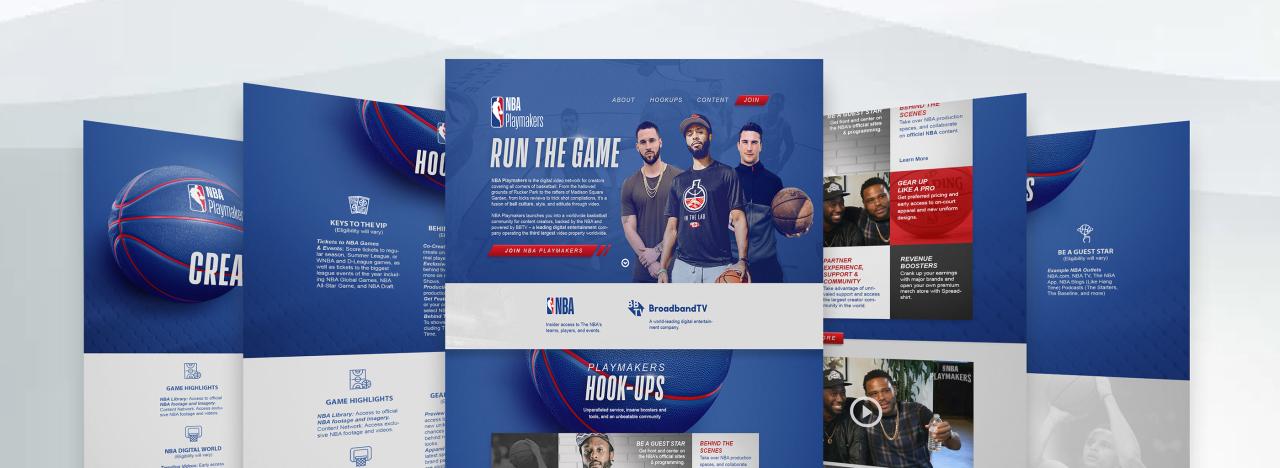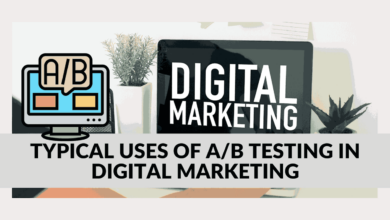
Brand Refresh A Comprehensive Guide
Brand refresh takes center stage as businesses strive to stay relevant in a dynamic market. This guide delves into the entire process, from defining the concept to maintaining consistency across all platforms. We’ll explore the motivations behind a refresh, the crucial steps involved in assessing current performance, and the strategies needed to successfully implement and maintain the new brand identity.
Understanding the nuances of visual identity, messaging, and tone will be key to a successful transformation.
This detailed overview covers everything from defining a brand refresh and differentiating it from a rebrand to outlining the steps in implementing a successful campaign. We’ll also analyze the role of technology, consumer preferences, and market research in shaping your refresh strategy. Finally, we’ll emphasize the importance of maintaining brand consistency throughout the process.
Defining Brand Refresh

A brand refresh is a strategic process of rejuvenating a brand’s image without fundamentally altering its core identity. It’s a way to update a brand’s visual elements, messaging, and positioning to better connect with its target audience in the current market. Essentially, it’s a mid-life makeover for a brand, ensuring its relevance and vibrancy remain intact.Unlike a rebrand, which involves a complete overhaul of a brand’s identity, a refresh aims to maintain its core values and mission.
It’s about polishing the existing brand rather than creating a completely new one. This approach often proves more cost-effective and less disruptive than a full rebrand, while still delivering significant positive impacts on brand perception and market position.
Brand Refresh vs. Rebrand
A brand refresh focuses on updating existing elements while a rebrand completely changes the brand’s identity. Think of a refresh as a subtle update, like upgrading your phone’s operating system, while a rebrand is like buying a whole new phone. Rebrands often occur when a company undergoes a significant shift in its mission or target audience. Refreshing a brand is more appropriate for brands seeking to stay current without losing their core values or customer base.
Motivations Behind a Brand Refresh
Several factors can drive the need for a brand refresh. A declining market share or shifts in consumer preferences may necessitate a refresh to keep the brand relevant. Changing market trends, evolving consumer values, or emerging technologies can also signal the need for a refresh. A brand refresh can also be used to enhance brand awareness, boost sales, or introduce new products and services.
Finally, a brand refresh can be a response to competitor activity, positioning the brand in a more competitive light.
Stages in a Brand Refresh Project
A brand refresh typically involves several distinct stages, each crucial for success. These stages typically include research and analysis, strategy development, creative execution, and launch and evaluation. Thorough market research is essential to understand the current brand perception and identify opportunities for improvement. Effective strategy development ensures the refresh aligns with the brand’s overall goals. Creative execution translates the strategy into tangible assets, while launch and evaluation measure the success of the refresh and inform future strategies.
Key Elements of a Brand Refresh
Several key elements are critical to a successful brand refresh. These include brand positioning, visual identity, messaging, and customer experience. Understanding the brand’s core values and target audience is essential for crafting a compelling positioning statement. Visual identity elements like logos, color palettes, and typography should be updated to reflect the current market trends and brand personality.
Effective messaging that resonates with the target audience is paramount. Finally, the customer experience needs to be reviewed and updated to align with the new brand identity.
Illustrative Stages of a Brand Refresh Project
| Before Refresh | During Refresh | After Refresh |
|---|---|---|
| Existing brand identity (logo, colors, messaging) may be outdated or no longer resonate with target audience. Market share is declining. | Market research and analysis are conducted to understand current brand perception and identify areas for improvement. A new brand strategy is developed, including updated visual identity, messaging, and customer experience. | Updated brand identity (logo, colors, messaging) is implemented across all platforms. A strengthened customer experience is introduced. Improved market share and increased brand awareness are noticeable. |
Assessing Current Brand Performance
A brand refresh isn’t just about aesthetics; it’s a deep dive into the current health of your brand. Understanding where your brand stands now—its strengths, weaknesses, and overall performance—is crucial for a successful refresh. A thorough assessment lays the foundation for strategic decisions, ensuring the refresh aligns with your target audience and market needs.A critical aspect of a successful brand refresh is an in-depth analysis of the brand’s current performance.
This encompasses a comprehensive evaluation of various metrics, including brand awareness, perception, and loyalty. Understanding your target audience’s preferences and the effectiveness of existing brand assets (logo, colors, typography) is essential for a successful strategy. Finally, market research provides crucial insights to inform decisions and ensure the refresh resonates with the target market.
Key Performance Indicators (KPIs)
Brand performance evaluation relies on specific KPIs. These indicators provide quantifiable data to gauge the effectiveness of your current brand strategy. Key KPIs include brand awareness, brand perception, customer loyalty, sales figures, and website traffic. Tracking these metrics allows for a clear understanding of what’s working and what needs improvement.
Measuring Brand Awareness, Perception, and Loyalty
Brand awareness encompasses how familiar your target audience is with your brand. Measuring it involves surveys, social media monitoring, and website analytics. Brand perception, on the other hand, focuses on how your target audience views your brand—its reputation, values, and overall image. Customer surveys, focus groups, and social listening tools can help measure this. Finally, customer loyalty is measured by repeat purchases, customer lifetime value, and positive online reviews.
A high level of customer loyalty indicates strong brand affinity.
Understanding Target Audience Preferences
Understanding your target audience’s preferences is paramount. This requires deep research into their demographics, psychographics, values, and buying behaviors. Tools like surveys, focus groups, and social media listening can help understand their preferences and expectations. Analyzing competitor strategies and understanding their target audience preferences can also provide valuable insights.
Evaluating Current Brand Assets
Assessing current brand assets, including the logo, color palette, typography, and overall visual identity, is essential. Outdated or ineffective assets can hinder a brand’s ability to connect with its target audience. A critical evaluation considers factors such as visual appeal, memorability, and appropriateness for the target market.
Conducting Market Research for a Brand Refresh Strategy
Thorough market research is critical to inform a brand refresh strategy. This involves collecting and analyzing data about your target market, competitors, and industry trends. Quantitative methods, such as surveys and statistical analysis, provide numerical data. Qualitative methods, such as focus groups and interviews, offer deeper insights into customer perceptions and motivations. Market research helps refine your brand strategy, ensuring it resonates with the target market and meets their needs.
Sample SWOT Analysis
| Factor | Strengths | Weaknesses | Opportunities | Threats |
|---|---|---|---|---|
| Brand Awareness | High recognition among Gen Z | Low awareness among Baby Boomers | Potential for expansion into new demographics | Increased competition from new entrants |
| Brand Perception | Trusted for quality | Perceived as outdated | Opportunity to leverage heritage | Negative publicity from a recent incident |
| Brand Loyalty | Strong customer retention rate | Limited customer advocacy | Opportunities to increase brand advocacy | Economic downturn impacting consumer spending |
| Product Offering | Innovative product features | Limited product variety | Potential to expand product lines | Changes in consumer preferences |
| Financial Performance | Consistent profitability | High marketing expenses | Opportunities for investment in new technologies | Economic uncertainty |
Strategies for Refreshing the Brand: Brand Refresh
A successful brand refresh isn’t just about changing logos and colors; it’s a strategic overhaul that aligns the brand with evolving consumer expectations and market trends. It requires a deep understanding of the current brand performance, target audience, and competitive landscape. A well-executed refresh can revitalize a brand’s image, boosting recognition, engagement, and ultimately, profitability.This section dives into the practical strategies for refreshing a brand, drawing from successful case studies and examining different approaches.
A brand refresh is a great way to keep things interesting, but it’s also crucial to consider how your new look translates to search engine visibility, particularly on Google News. Understanding Google News SEO is key to making sure your refreshed brand gets the attention it deserves. Optimizing your content for Google News will help your brand refresh efforts reach a wider audience and boost your visibility in the news feed.
This is a crucial step for maximizing the impact of your brand refresh efforts. Google News SEO is an essential part of a successful brand refresh strategy.
We’ll explore the vital components of a modern brand refresh, from visual identity to messaging, technology, and consumer-centric adaptation.
Successful Brand Refresh Campaigns
Numerous brands have successfully navigated brand refreshes, demonstrating the power of strategic adaptation. Consider the evolution of Coca-Cola, which has consistently updated its visual identity and messaging to maintain relevance throughout decades. Similarly, Apple, with its iconic minimalist aesthetic, consistently refines its design language and product offerings, mirroring changing consumer tastes and technological advancements. These examples showcase the importance of staying attuned to the market and adapting to consumer preferences.
Approaches to Updating Visual Identity
A brand’s visual identity is often the first point of contact with consumers. Refreshing visual identity can involve a complete overhaul, as seen in the rebranding of Old Spice, which dramatically changed its messaging and aesthetic. Alternatively, a more subtle approach, like a refreshed color palette or updated typography, can effectively modernize the look without a complete departure from the original identity.
This flexibility allows brands to tailor their approach based on their specific goals and brand personality. Consider carefully the impact of different design elements, including logos, color palettes, typography, and imagery, on the overall brand perception.
Modernizing Brand Messaging and Tone
Effective messaging is crucial for conveying a brand’s value proposition. A modern refresh should adapt to current communication styles, employing clear, concise language and tone that resonate with the target audience. For instance, a brand previously relying on formal language might shift to a more conversational and engaging tone to connect with younger audiences. Adapting to current trends in language and communication is critical for staying relevant and engaging.
Adapting to Evolving Consumer Preferences
Consumer preferences are dynamic and ever-changing. Successful brand refreshes anticipate these shifts by thoroughly understanding the current consumer landscape. Understanding evolving trends, preferences, and values is critical for staying connected with the target audience. A brand should proactively monitor social media, market research, and competitor analysis to anticipate shifts in consumer preferences and adjust their strategies accordingly.
The Role of Technology in Supporting a Brand Refresh
Technology plays a pivotal role in a successful brand refresh. Digital platforms, social media, and other digital channels allow for more targeted communication and engagement with the target audience. Technology facilitates faster and more effective communication and interaction with customers. This includes the use of data analytics to track the effectiveness of different strategies and make necessary adjustments.
Table of Brand Refresh Strategies
| Strategy | Description | Examples |
|---|---|---|
| Digital-First | Prioritizes digital channels for brand building and engagement. | Many startups and tech companies adopt this approach. |
| Experiential | Focuses on creating immersive and memorable brand experiences. | Interactive events, pop-up shops, and product demonstrations. |
| Content-Driven | Emphasizes high-quality content creation to establish thought leadership and build brand authority. | Blog posts, articles, videos, and social media content. |
| Sustainability-Focused | Integrates environmental and social responsibility into the brand’s identity and values. | Brands highlighting eco-friendly practices and ethical sourcing. |
Implementing the Brand Refresh
Bringing a brand refresh to life requires a meticulously planned and executed rollout. This phase isn’t just about changing logos and colors; it’s about seamlessly integrating the new brand identity across all touchpoints, ensuring a cohesive and impactful experience for stakeholders and customers alike. Successful implementation hinges on clear communication, meticulous execution, and ongoing evaluation.
Launching a Brand Refresh Campaign
A successful campaign launch requires a phased approach. First, define clear launch dates and milestones. Next, develop a comprehensive communication plan outlining how the new brand will be introduced to various stakeholders. This plan should include internal communications for employees and external communications for customers and partners. Timing is critical; launching during periods of high engagement or anticipation can maximize impact.
Consider factors such as media opportunities, industry events, or seasonal promotions to align the launch with optimal visibility.
Communicating the Refreshed Brand to Stakeholders
Stakeholder communication is vital for buy-in and successful adoption of the refreshed brand. This involves tailoring messages to different audiences, ensuring clarity and consistency in messaging across all channels. Internal communication should emphasize the rationale behind the refresh and how it benefits employees. External communication should focus on the benefits for customers and the value proposition of the refreshed brand.
A brand refresh can be a game-changer, but understanding your marketing automation tools is crucial. For instance, knowing the difference between MQLs and SQLs is key to a successful campaign, especially when optimizing your sales funnel. Choosing the right tools, like those that handle MQL vs SQL effectively, mql vs sql , will ultimately help you track and nurture leads more efficiently.
This, in turn, will make your brand refresh even more impactful.
Transparency and proactive engagement are key to managing expectations and addressing any concerns that might arise. Examples include internal town hall meetings, employee newsletters, and external press releases or social media campaigns.
Updating Brand Guidelines and Assets
Updating brand guidelines is a crucial step in implementing a brand refresh. New guidelines should reflect the refreshed visual identity, including updated logos, color palettes, typography, and imagery. This process ensures consistency across all brand materials. A comprehensive brand style guide serves as a living document, providing clear instructions and examples for all stakeholders involved in creating brand-compliant materials.
A brand refresh is more than just a new logo; it’s about deeply understanding your audience. To truly resonate with your target market, you need to leverage advanced audience targeting techniques, like those detailed in this helpful guide advanced audience targeting. By precisely identifying your ideal customer through these strategies, you can craft a brand message that hits the mark and strengthens your overall brand refresh efforts.
Ensuring all brand assets, including marketing collateral, website content, and product packaging, are updated to align with the new guidelines is critical for a cohesive brand experience.
Measuring the Success of the Refresh
Measuring the success of a brand refresh goes beyond vanity metrics. Quantitative metrics, such as website traffic, social media engagement, and sales figures, provide valuable data. Qualitative feedback, such as customer surveys and employee feedback, offers insights into the effectiveness of the refresh. Monitoring brand perception through sentiment analysis tools can provide further context. Regular tracking of these metrics enables adjustments to strategies and tactics as needed to maximize the impact of the refresh.
Key performance indicators (KPIs) should be established and tracked to gauge progress.
Implementation Process
| Tasks | Timeline | Responsible Person |
|---|---|---|
| Develop communication plan | Phase 1: 2 weeks prior to launch | Marketing Team |
| Update brand guidelines | Phase 1: 4 weeks prior to launch | Brand Management Team |
| Design new brand assets | Phase 1: 6 weeks prior to launch | Creative Team |
| Internal communication rollout | Phase 2: 1 week prior to launch | HR & Internal Communications |
| External communication rollout | Phase 2: Launch week | Marketing Team |
| Monitor and evaluate | Ongoing | Marketing & Brand Management Teams |
Feedback Loops in Refining the Brand Refresh
Integrating feedback loops is crucial for refining the brand refresh. Soliciting feedback from employees, customers, and other stakeholders throughout the process enables adjustments and improvements. Monitoring customer reactions to new branding elements, analyzing social media conversations, and conducting post-launch surveys can reveal areas for enhancement. Analyzing data and adapting strategies based on feedback ensures that the refreshed brand resonates with the target audience and achieves its objectives.
This iterative approach allows for continual refinement and improvement.
Visual Identity Refresh
A brand refresh isn’t just about changing logos and colors; it’s about fundamentally re-imagining how your brand communicates its essence. Visual identity plays a crucial role in this process, shaping first impressions and conveying brand values. A cohesive visual system builds trust and recognition, ultimately strengthening the brand’s overall impact.A well-executed visual refresh can significantly enhance a brand’s perceived value and attract a wider audience.
This section delves into the critical elements of a successful visual identity refresh, providing insights and examples to guide your own brand transformation.
Importance of Cohesive Visual Identity
A cohesive visual identity creates a unified and memorable brand experience across all platforms. This consistency fosters recognition and builds trust with your target audience. A well-defined visual identity strengthens brand recall and differentiates your brand in a crowded marketplace. It serves as a powerful tool for conveying brand values and personality, allowing customers to quickly understand your brand’s unique position.
Successful Logo Rediresigns
Numerous brands have successfully leveraged logo redesigns during brand refreshes to rejuvenate their image and connect with a modern audience. For example, the redesign of the Coca-Cola logo, while retaining its iconic essence, updated the typeface and colors to reflect a contemporary feel. Similarly, the Pepsi logo refresh aimed to modernize the brand’s image. These examples demonstrate that effective logo redesigns can significantly impact brand perception and market appeal.
Role of Color Palettes and Typography
Color palettes and typography are vital components of visual identity, conveying brand personality and values. Deep blues can project trust and stability, while vibrant yellows might evoke energy and playfulness. Font choices, whether elegant or bold, communicate brand personality and hierarchy. Consistent application of these elements across all brand materials ensures a unified brand message.
Maintaining Brand Consistency Across Platforms
Brand consistency is paramount for building a strong brand presence. Maintaining a unified visual style across websites, social media platforms, print materials, and other touchpoints reinforces brand recognition. A dedicated style guide serves as a crucial resource for ensuring brand consistency and creating a uniform visual experience for all stakeholders.
Creating a New Visual Style Guide
A comprehensive visual style guide is essential for maintaining brand consistency. It should clearly define brand colors, typography, logo usage, imagery guidelines, and other visual elements. This guide acts as a reference point for all brand communications, ensuring that every visual representation reflects the desired brand identity. The style guide should be easily accessible and regularly reviewed to ensure its continued relevance.
Visual Identity Elements Before and After Refresh
| Element | Before Refresh | After Refresh |
|---|---|---|
| Logo | Traditional, slightly outdated design | Modernized, more contemporary design |
| Color Palette | Limited, muted colors | Expanded palette with modern, complementary colors |
| Typography | Formal, traditional font | Modern, easily readable font |
| Imagery Style | Generic stock photography | Custom photography with a cohesive aesthetic |
Messaging and Tone of Voice

Crafting a compelling brand message is crucial for a successful brand refresh. A clear and consistent tone of voice, tailored to specific audiences, helps build brand recognition and trust. Effective messaging ensures that the brand’s core values and personality resonate with its target demographic, driving engagement and ultimately, conversions.Adapting messaging across various platforms and audiences is vital for a holistic brand experience.
This necessitates understanding the nuances of different communication channels and tailoring the brand voice accordingly. A unified message, however, is critical to maintaining brand integrity and recognition.
Importance of Clear and Concise Messaging
Clear and concise messaging is paramount in today’s fast-paced world. Customers are bombarded with information, making it essential for brands to cut through the noise with impactful and easily understood communication. A well-defined message helps customers quickly grasp the brand’s value proposition, fostering a positive impression and building trust. This clarity extends to all forms of communication, from website copy to social media posts.
Ambiguity or confusion can lead to customer disengagement and a diluted brand image.
Adapting Brand Messaging for Different Target Audiences
Brands must tailor their messaging to resonate with their diverse target audiences. Understanding the specific needs, preferences, and pain points of each audience segment is key to creating impactful messaging. For example, a message aimed at a younger demographic might use a more playful and informal tone, while a message directed at a more mature audience might adopt a more formal and authoritative style.
This adaptability ensures the brand’s message connects with each audience on an individual level.
Examples of Successful Brand Voice Adaptation
Several brands have successfully adapted their brand voice for different audiences. Nike, for instance, employs a motivational and inspirational tone for athletes, while simultaneously using a more approachable and family-friendly tone for its broader marketing campaigns. Similarly, Patagonia leverages an environmentally conscious and adventurous voice to engage with outdoor enthusiasts, while maintaining a more general, ethical appeal for a wider consumer base.
Best Practices for Maintaining Brand Consistency in Tone
Maintaining brand consistency is essential for building recognition and trust. A consistent tone of voice ensures that the brand’s personality and values are conveyed effectively across all platforms. A well-defined brand voice guide is critical in achieving this consistency.
Process of Creating a New Brand Voice Guide
Creating a brand voice guide is a multi-step process. It begins with a thorough understanding of the brand’s core values, personality, and target audience. Next, a clear articulation of the desired tone and style for different communication channels is established. This includes defining specific language, vocabulary, and sentence structures. Examples of specific language and vocabulary are essential.
A style guide that details the acceptable and unacceptable tone across all platforms and channels is critical.
Brand Voice Examples Across Platforms
| Platform | Brand Voice Example |
|---|---|
| Website | Clear, concise, and informative language focusing on product details and benefits. A professional, trustworthy tone is vital. |
| Social Media (Twitter) | Engaging, conversational, and quick-witted. Utilizing relevant hashtags and engaging with followers is crucial. |
| Social Media (Facebook) | Friendly, approachable, and community-oriented. Building relationships with followers and promoting brand values is key. |
| Email Marketing | Direct, actionable, and personalized. Focusing on value propositions and addressing customer concerns are important. |
| Advertising | Compelling, persuasive, and memorable. Highlighting unique selling points and appealing to emotions are effective strategies. |
Maintaining Brand Consistency
A strong brand isn’t just about a catchy logo or a snappy tagline; it’s about a cohesive experience across every touchpoint. Maintaining brand consistency ensures your audience recognizes and trusts your brand, regardless of where they encounter it. This consistency builds familiarity, fosters trust, and ultimately, drives brand loyalty.Brand consistency isn’t a one-time project; it’s an ongoing commitment.
It requires a deep understanding of your brand identity, meticulous execution, and a proactive approach to monitoring and adapting to changing market conditions. Maintaining this consistency requires careful planning and execution across all aspects of your brand.
Brand Style Guide: The Cornerstone of Consistency
A comprehensive brand style guide is the cornerstone of maintaining brand consistency. It serves as a living document that Artikels the rules and guidelines for using your brand elements, ensuring uniformity in everything from logo usage to tone of voice. This document is not static; it’s a tool that evolves with the brand, ensuring your messaging and visual identity remain relevant.
| Category | Description |
|---|---|
| Logo Usage | Specifies correct placement, size, color variations, and prohibited uses to maintain brand recognition and avoid dilution. |
| Typography | Defines the specific fonts, font sizes, and styles used for all brand communication. |
| Color Palette | Artikels the specific colors associated with the brand, including hex codes, and their appropriate uses in different contexts. |
| Imagery & Photography | Defines the style, tone, and composition guidelines for images and photography used in brand communication. |
| Tone of Voice | Specifies the language, style, and personality used in all brand communication, from social media posts to website copy. |
| Graphic Elements | Artikels any unique graphic elements, patterns, or illustrations used in brand communication. |
| Brand Voice | Defines the overall personality, attitude, and style of communication across all platforms. |
Brand Ambassadors: Extending the Reach of Consistency
Brand ambassadors are crucial in maintaining brand consistency, acting as extensions of your brand voice and values. They are trusted advocates who represent your brand authentically, reinforcing your brand message and building trust with your target audience. By training brand ambassadors on your brand’s style guide and tone of voice, you ensure consistent messaging across various channels and platforms.
Regular Brand Audits: Keeping Up with the Times
Regular brand audits are essential for maintaining consistency in the face of changing market dynamics and evolving customer preferences. They provide a systematic way to evaluate the effectiveness of your brand strategies and identify any gaps in brand consistency across touchpoints. By analyzing performance, you can adapt to market changes, maintain brand relevance, and enhance your brand experience.
Measuring Brand Consistency: Quantifying Success, Brand refresh
Brand consistency can be measured through various quantitative and qualitative metrics. Tracking website traffic and social media engagement provides a direct link between brand consistency and performance. Customer surveys and feedback provide invaluable qualitative data on the overall brand experience and perception. Quantitative analysis of brand mentions in media and social media helps gauge how consistently your brand is perceived.
By tracking these key indicators, you can gain insights into your brand’s effectiveness and identify areas needing improvement.
Ending Remarks
In conclusion, a successful brand refresh isn’t just about aesthetics; it’s about aligning your brand with evolving market trends and consumer expectations. By understanding the stages of the process, meticulously assessing your current position, crafting effective strategies, and consistently maintaining your new identity, you can position your brand for long-term success. This comprehensive guide provides the essential framework for a successful brand refresh.





